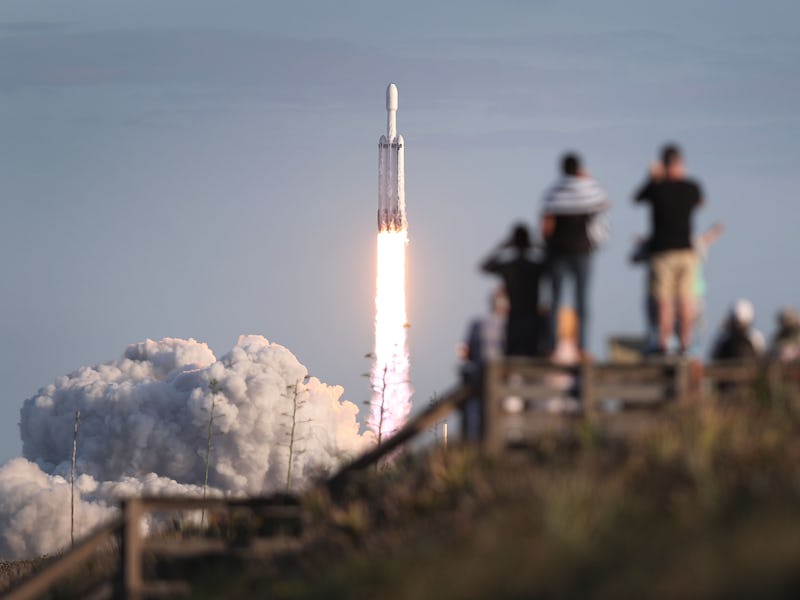SpaceX’s Falcon Heavy is getting a giant cloak for key military missions
Elon Musk's giant rocket is getting a bizarrely-shaped tower.

The Falcon Heavy, the world's most powerful rocket in operation, is getting a giant tower to vertically load payloads for the likes of the United States Air Force.
A planned Mobile Service Tower, detailed in a Federal Aviation Administration report released Thursday, will give SpaceX the ability to vertically integrate payloads with its rockets. That means instead of loading satellites onto the rocket horizontally, it can place them on top with the rocket already in position. Teslarati notes that practically everyone else besides Russian operators and a couple of other companies use vertical integration, so this means SpaceX is joining its competitors. It also means reducing the strain for clients that might otherwise have to work to the company's unorthodox loading strategy.
But looking at the released concept images, and it's clear to see why SpaceX avoided this approach for so long. The tower is huge, enveloping the rocket in a giant cloak that bears resemblance to the Monolith from 2001: A Space Odyssey. It measures 284 feet tall, 118 feet wide, 108 feet deep, and come with 11 floors. The whole construction would use four transport wheels to move 130 feet. It will be used at Launch Complex 39A, the pad at Florida's Kennedy Space Center that once served the Apollo missions.
"It’s not that big really," SpaceX CEO Elon Musk told his 31.5 million Twitter followers Thursday evening.
SpaceX's giant tower in action.
The tower designs, included in a draft environmental assessment, also demonstrate how the platform would look before and after the tower wheels out.
Launch position and integration position.
The document notes that SpaceX plans to use its giant tower to support "commercial launches, NASA launches, and USAF’s National Security Space Launch program." The latter program is currently looking for partners for the second phase, which would enable the Air Force to send up sensitive payloads into orbit. SpaceX is one of four firms bidding for two contracts. SpaceX previously won a contract to send up a GPS III satellite in 2016, and in 2019 it helped collect data for the program via the STP-2 mission.
While the Falcon Heavy impressed onlookers when it first launched, it's grown relatively quiet since. The first test mission in February 2018 sent up Musk's red Tesla Roadster with a dummy in the driver's seat, an imaginative payload that brought the rocket to mainstream prominence. It's also the most powerful operational rocket in the world, with the ability to produce 5.1 million pounds of thrust at liftoff and send up 140,000 pounds to low-Earth orbit. NASA's Saturn V is the only rocket to ever outstrip these figures.
Launches have been few and far between since, and the Falcon Heavy has only completed three flights in total. The Falcon 9, by comparison, has completed 35 launches between now and the start of 2018.
The Falcon Heavy remains in the shadows – both physically and metaphorically, thanks to its new cloak.